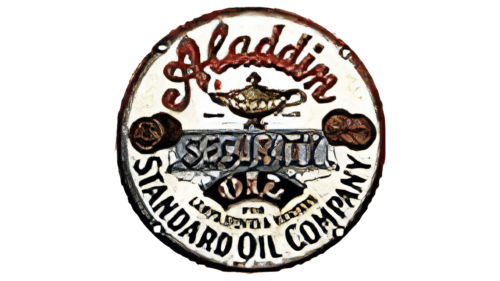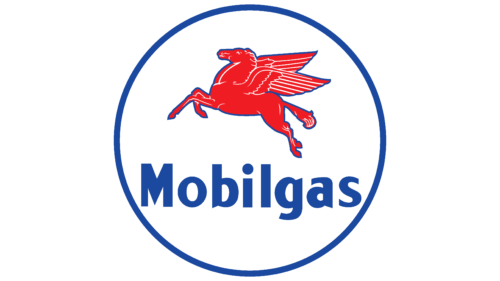If we compare the two descendants of Standard Oil, we can see that the Mobil brand logo is more diverse and creative. Because of the frequent mergers of the company, it has changed several times, each time being reborn in a new guise. Now it is a strict blue-and-red text icon, combining it with the Exxon logo.
Mobil: Brand overview
| Founded: | 1911 – 1999 |
| Founder: | John D. Rockefeller |
| Headquarters: | Fairfax, Virginia, United States |
| Website: | mobil.com |
Mobil is an oil industry brand owned by the American corporation ExxonMobil. It is a brand of motor oil and a chain of filling stations. It was formerly a direct descendant of Standard Oil, a firm formed by John D. Rockefeller. Its original name was Standard Oil Company of New York or Socony for short.
The company made its debut in the late 19th century when it was part of the largest oil and gas organization created by the Rockefeller family. But later, the company split into two separate units, and in 1911 these firms were split into several more structures. In 1999, they merged again.
Meaning and History
According to the agreement, Exxon bought Mobil but retained its identity, becoming, in effect, the parent corporation. With a rich history, ExxonMobil is now the largest oil and gas industry player. The brand has ten logos.
What is Mobil?
Mobil is an oil and gas brand that originates from a company that Rockefeller opened. It is now a well-known U.S. brand that produces technical oils and owns filling stations. Its first name was Socony, derived from the Standard Oil Company of New York.
1892 – 1904
In its infancy, the oil and gas company focused on technical oil, so its logo featured a grease gun commonly used for pouring products and lubricating parts. But the designers got creative and drew it in the shape of Aladdin’s lamp, which was written above in italic font, imitating handwriting. In the lower area was the full name of the brand. It was typed in grotesque black lettering. A white circle served as a background.
1904 – 1908
The emblem of this period was modern and fundamentally different from the debut version. It also had the company’s full name, but it was on an improvised shield and divided into three lines. In the upper zone was the abbreviation Socony, derived from Standard Oil Company of New York. The second and third rows were occupied by the words “Motor” and “Oil. They were in dark red, as was the surrounding border. In addition, there were several bold white letters in the ring: “S,” “O,” “Y,” and “N.” They were all capital letters. Then there was a line separating the circle’s edge from the center. There were also informative inscriptions in small print.
1904 – 1932
During this period, the iconic gargoyle appeared in Mobil’s identity because engine oil with the same name – Gargoyle – went on sale. The mythical character was depicted with black jerky strokes and had a red body. It was positioned horizontally and extended to the right side. The head of the animal was directed downwards. This sign represented strength, courage, vigilance, and total protection from trouble.
1911 – 1931
To balance the logo and make it less aggressive, the designers used the image of Pegasus. It also had wings, like the gargoyle (to indicate the high speed of movement), but it did not evoke controversial emotions – only positive ones. The winged horse was drawn in flight, as evidenced by the placement of its legs. The animal was facing to the left. The pegasus was white, outlined with a thin black stripe.
1931 – 1932
Gargoyle motor oil became widely sought after, so it was spun off into a separate brand name. For the logo, designers chose the image of 1904 and supplemented it with two inscriptions. At the top was the word “Gargoyle,” typed in grotesque letters with a red stripe in the middle. It was arched. At the bottom was the Mobiloil brand name in bold glyphs in black. This inscription was large.
1932 – 1959
The winged Pegasus was back on the logo again but more refined. Compared to the previous image, he became graceful and well-drawn: every muscle was visible. The artists painted the mythological character red and outlined it with white strokes, which contrasted greatly with the gargoyle. At the bottom was the then name of the technical oil brand, Mobiloil. The typographers changed the lettering style and chose a sans serif typeface with the letters stretched upward. The solid text balanced the light-winged horse.
1932 – 1939
For Mobilgas, the parent company, also used Pegasus. But in addition to him, the logo had a pentagonal shield with a blue edge. Also present was the inscription “Socony – Vacuum” in the same red color as the winged horse.
1939 – 1956
In this version, the designers circled the red Pegasus with a blue outline, reduced the font in the name, removed the lower lettering, and replaced the shield with a plain circle.
1956 – 1966
The redesign resulted in a modern and stylish logo with a different concept. In fact, it was the first visual identity for an oil and gas company after it was renamed Mobil. The developers kept both the iconic symbol and the color palette. But they placed a miniature winged horse under the brand name, changing their proportions. The letters were rounded and flattened. The horse was placed over two triangles connected in the shape of wings. At the top was a blue frame with a thickening in the middle.
1964 – today
The logo designed by Chermayeff & Geismar is textual. It contains a single inscription: “Mobil.” The name is large, light blue, with geometrically smooth glyphs. The exception is the letter “O,” which the authors have colored in red to emphasize the corporate palette. The frames (circle and shield) are gone.
Font and Colors
The parent corporation, which owns the brand Mobil, has not abandoned the red Pegasus. It is still present, as before, on cars, equipment, and buildings owned by the company. However, the official version uses only a verbal symbol, which looks simple but elegant.
In the Mobil logo, the lettering is in Avant Garde Gothic Bold. The letters are simple, geometric, and sans serif. The author of the font is Herb Lubalin & Tom Carnase. The publisher is International Typeface Corporation. The company’s corporate palette is a combination of red and blue. It appeared in 1904 and hasn’t been changed since.
Mobil color codes
| Medium Persian Blue | Hex color: | #0266b3 |
|---|---|---|
| RGB: | 2 102 179 | |
| CMYK: | 99 43 0 30 | |
| Pantone: | PMS 285 C |
| Imperial Red | Hex color: | #ec1b2f |
|---|---|---|
| RGB: | 236 27 47 | |
| CMYK: | 0 89 80 7 | |
| Pantone: | PMS Bright Red C |















